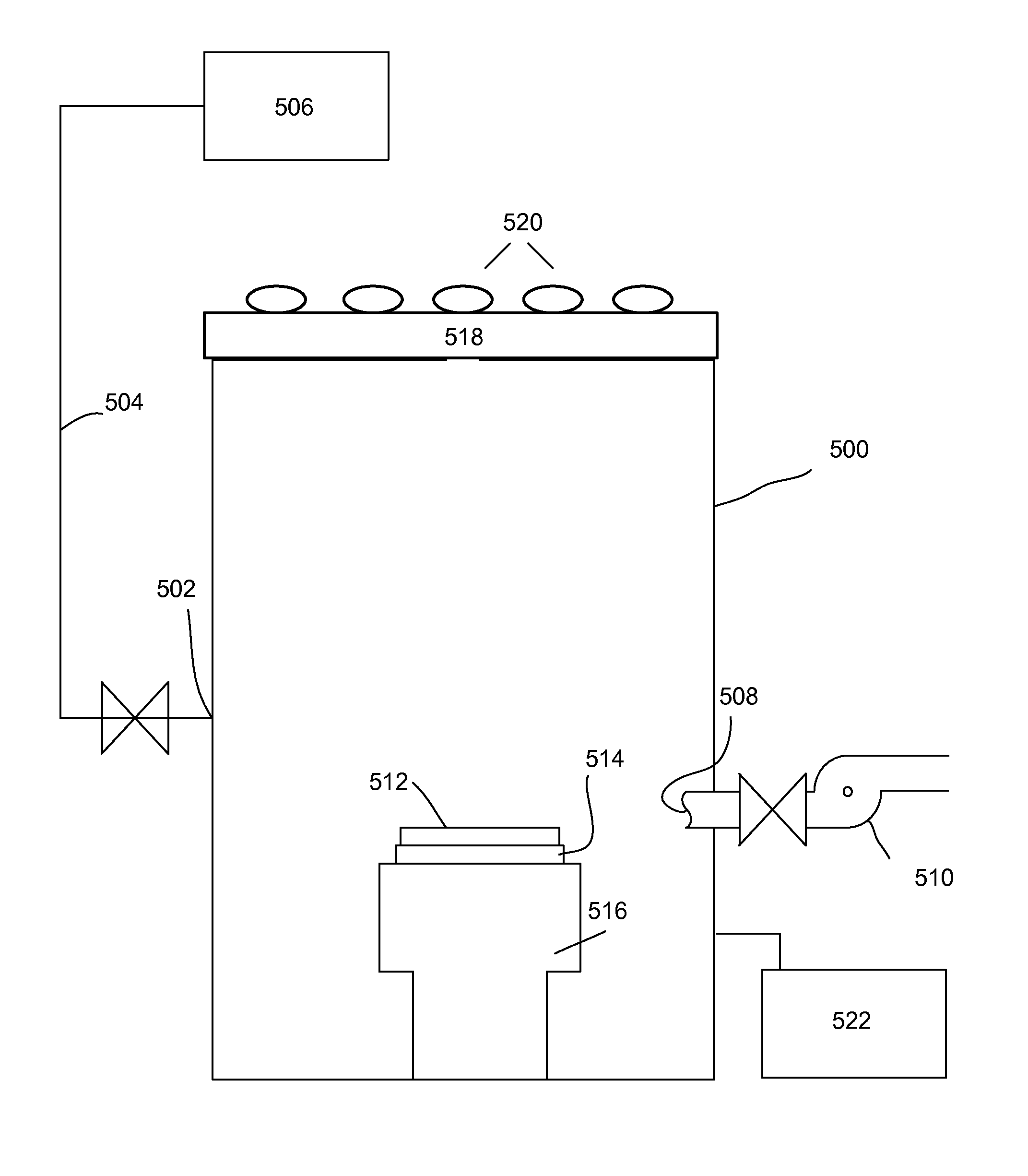Isotropic atomic layer etch for silicon and germanium oxides
a technology of germanium oxides and atomic layers, applied in the direction of coatings, chemical vapor deposition coatings, electric discharge tubes, etc., can solve the problems of high undesired native oxides and other oxides, limited control methods for one or several atomic layers removal, and high difficulty in further processing steps, etc., to achieve rapid and controlled temperature changes
- Summary
- Abstract
- Description
- Claims
- Application Information
AI Technical Summary
Benefits of technology
Problems solved by technology
Method used
Image
Examples
example 1
[0056]In this implementation, the entire etching cycle is performed at a sufficiently high temperature that does not allow water to stay adsorbed as it is generated in the etching reaction. In some embodiments, the etching process is performed at a temperature of at least about 80° C., such as between about 80° C.-300° C., e.g., between about 100° C.-300° C. The advantage of this method is that the temperature can be kept substantially constant during the entire etching cycle. Furthermore, because water is removed as it is generated during the etching reaction, the HF can be added in this embodiment in excess because the reaction will be limited by the amount of active hydrogen-containing species on the modified surface of the oxide after the first hydroxylation step. This embodiment, however, is not limited to using excess quantity of HF, and in some implementations, a controlled, limited amount of HF is dosed.
[0057]In one specific implementation of this example, the process makes ...
example 2
[0059]In this implementation water is removed from the surface of the substrate by electromagnetic irradiation (e.g., UV irradiation), by plasma treatment (e.g., by electrons, radicals and ions formed in a plasma) or by electron beam treatment. The water is removed from the substrate surface as it is generated in the reaction. The advantage of this implementation is that radiation-independent heating of the substrate is not necessary. Further, in this implementation, the choice of the active hydrogen-containing species that can modify the surface of oxide is more extensive than in Example 1. Similarly to Example 1, HF can be flowed in excess, because water is removed during the reaction, and the amount of removed oxide is determined by the amount of modified oxide in the first step. In this implementation the active hydrogen-containing species (water, an alcohol, a carboxylic acid, or a species generated in hydrogen plasma) contacts the substrate in period P1 and modifies the surfac...
example 3
[0060]In this embodiment water is removed from the surface of the substrate by raising the temperature to a temperature that is sufficient to desorb water and / or by lowering the pressure to achieve the conditions that desorb water from the substrate surface.
[0061]For example, the substrate may be treated with an active hydrogen-containing species at a first temperature. At some point after treatment with the active hydrogen-containing species, the temperature is raised to a second temperature that is sufficient to desorb water from the surface of the substrate. For example, if the active species is the species generated from a hydrogen-containing plasma, or if the active species is an alcohol or a carboxylic acid that has a vapor pressure that is lower or that is not significantly higher than the vapor pressure of water and the second temperature does not cause dehydroxylation of the surface of the substrate, the temperature may be raised as early as immediately after treatment with...
PUM
| Property | Measurement | Unit |
|---|---|---|
| temperature | aaaaa | aaaaa |
| temperature | aaaaa | aaaaa |
| pressure | aaaaa | aaaaa |
Abstract
Description
Claims
Application Information
 Login to View More
Login to View More - R&D
- Intellectual Property
- Life Sciences
- Materials
- Tech Scout
- Unparalleled Data Quality
- Higher Quality Content
- 60% Fewer Hallucinations
Browse by: Latest US Patents, China's latest patents, Technical Efficacy Thesaurus, Application Domain, Technology Topic, Popular Technical Reports.
© 2025 PatSnap. All rights reserved.Legal|Privacy policy|Modern Slavery Act Transparency Statement|Sitemap|About US| Contact US: help@patsnap.com



